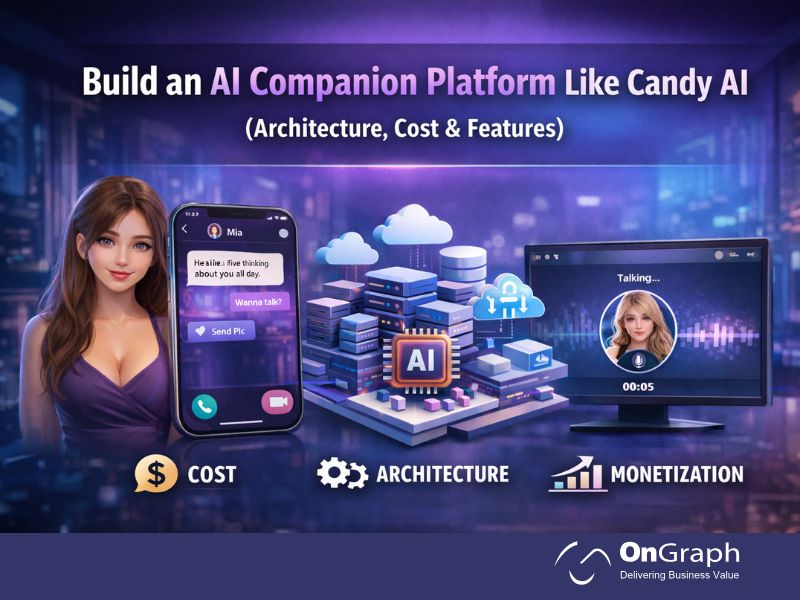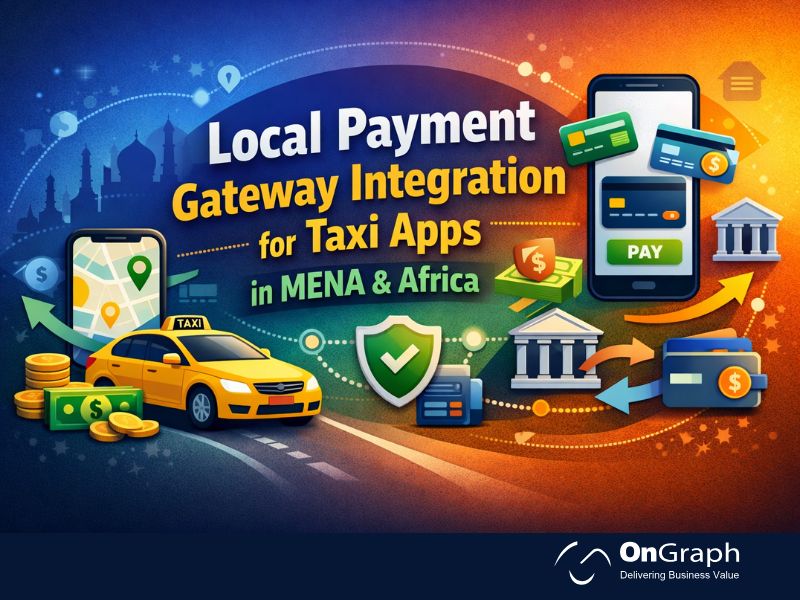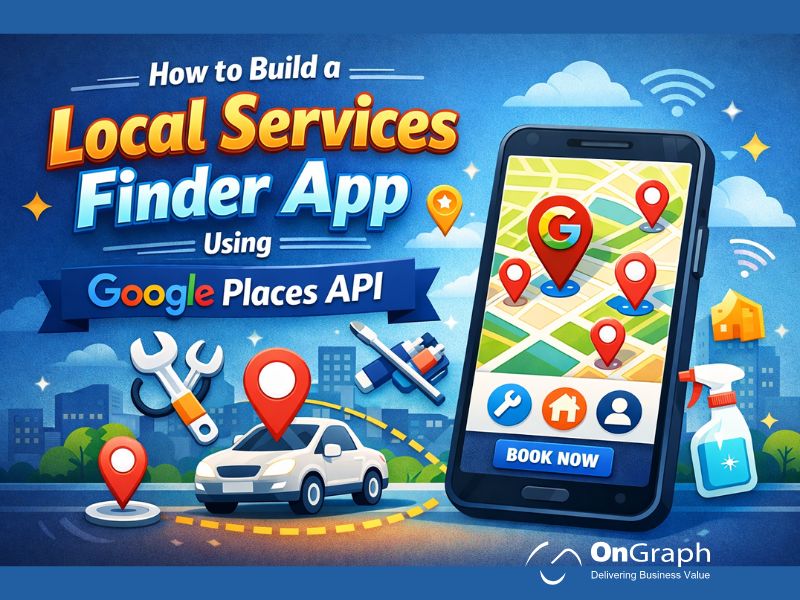The global food industry is evolving, and so are challenges. Businesses have adopted technology solutions to overcome these challenges. Still, the entire system lacks transparency, posing a major issue for consumers and regulators. From increasing food wastage to carbon footprint, the food industry needs smart solutions to reduce its environmental impact.
Today, customers are more aware of the food they consume. They are curious about how the food is prepared with a major focus on what it contains. The food industry has achieved this transparency- all thanks to the latest technologies that have reduced cost and wastage.
One of the leading technology trends in the food industry is blockchain. It offers a huge opportunity to track, address potential issues, and promote a more sustainable approach.
To make this work, partners across the global food industry must work together to improve traceability, cut down on waste, and promote sustainability. Thus they invest heavily in blockchain technology to transform the food industry.
Most businesses still struggle to understand how blockchain can help their food businesses in this challenging market. In this blog, we have highlighted 10 key real-world examples of blockchain in the food industry.
Before that, we will focus on the challenges in the traditional Food industry.
Existing Challenges of the Food Industry
The food industry is facing several challenges. Despite businesses having implemented advanced solutions to make it better, several loopholes still need modern-age solutions.
So, what are those loopholes?
1. Food wastage and sustainability
Food waste is the biggest problem in the food industry. In 2022, around 19% of food produced was lost between harvest and retail, globally. This issue does not end here as this wasted food accounts for significant climate change and 10% of global greenhouse gas emissions. It not only impacts the business but also the environment and puts a dent in the economy.
To reduce food waste, we can:
- Improve storage and transportation in developing countries to prevent loss after harvest.
- Raise awareness and change how people buy and use food.
- Use new technologies to reduce waste globally.
- Control inventory
2. Supply Chain Disruptions
The food industry is dynamic. It is affected by political issues, changing demands, and transportation problems, causing disruptions in the supply chain, leading to shortages, delays, and higher costs.
To reduce these disruptions, food and beverage companies can:
- Work with multiple suppliers
- Use technology to predict demand
- Strengthen relationships with suppliers
- Increase flexibility to adapt quickly
Focusing on sustainability and risk management can also help companies bounce back faster from unexpected problems.
3. Stringent Food Safety Regulations
There are more than 600 million instances of foodborne diseases. WHO claims that contaminated food is the major reason for such incidents.
In recent years, the food industry has faced stricter regulations and a greater need for transparency, especially around safety and quality. The Food Safety Modernization Act (FSMA), passed by the FDA in 2011, addresses these concerns, with Section 204 focusing on better food tracking, tracing, and record-keeping.
In the food service industry, ensuring food safety at every stage is crucial. This requires keeping up with changing rules, which can strain resources and require ongoing staff training.
Key challenges include-
- Risk of cross-contamination
- Poor hygiene practices
- Improper storage of food
Lack of proper staff training in food handling and sanitation can lead to contamination and illness. To ensure food safety, food service businesses must-
- Follow food safety laws and regulations
- Regularly check and monitor the supply chain for quality and safety
- Perform routine inspections and fix any issues right away.
4. Lack of transparency
Transparency leads businesses to consumer trust. But, in the food industry, people are losing their faith, only 53% of consumers feel confident their food is safe to consume. To improve transparency across the food journey is necessary to regain this trust. Businesses can integrate technologies that connect people directly to their food- from farm to table.
5. Food Fraud
Food fraud is one of the leading challenges that we witness every day. Businesses sell products and offer misleading information about them to make more money. This can hurt consumer trust and pose serious health risks. To prevent food fraud, businesses should
- Educate themselves on the issue and take proactive actions.
- Check the supply chain, carefully inspecting incoming products
- Make the entire process transparent to ensure the food is safe and as promised.
6. Intense Competition and Price Pressures
The food manufacturing industry is very competitive. Many brands are leveraging next-gen technology solutions to stay ahead and improve food quality. It makes it challenging for companies to find a balance between saving money and offering high-quality products.
To tackle these growing challenges, businesses need modern solutions like blockchain technology to ensure safety, security, and visibility.
Let’ understand the role of Blockchain in food industry.
Blockchain- a Game Changer in the Food Industry
Blockchain for the food industry means implementing blockchain technology across workflows and operations to overcome challenges in the traditional food industry.
A blockchain is a distributed ledger that records each transaction within the network. It is a suitable choice because no one can alter the recorded transaction data, making it traceable and transparent for everyone.
While the food industry is already using advanced systems to track data, even advanced supply chain solutions have their limits when they need to communicate with other proprietary systems, leading to significant visibility gaps.
Blockchain is changing its definition by improving traceability by creating a scalable and trusted supply chain ecosystem for global expansion. It helps businesses get real-time updates for better decision-making, leading to more efficient operations.
In the above image, you can see how blockchain is improving each sector in the food industry.
But, what drives this expanding usage of blockchain in the food industry?
- Increasing demand for transparency across workflows
- Need for sustainable solutions
- Increasing concerns for food safety and packaging
- Identify and control food product conditions
- Adhere to regulatory compliance requirements
How Blockchain is Reshaping the Food Industry?
Use case 1- Ensuring food safety and traceability
Blockchain ensures that the food you consume is authentic. It offers a way to bring transparency, safety, and trust back to the food supply chain.
1. Blockchain verifies transparency in the supply chain.
It records every step of food from the farm to the table. It means companies and consumers can track where the food came from, its ingredients, and how it was processed. This transparency helps identify inefficient workflows and build customer’s trust. With smart contracts, businesses can automate the verification process, reducing human error and streamline supply chain operations.
2. Blockchain can prevent food fraud and contamination.
Blockchain helps stop food fraud by creating an unchangeable record of every transaction. This makes it hard for anyone to tamper with the data. Each food item can be given a unique ID, so consumers can trace its journey and check if it’s real.
- allows end-to-end traceability by taking pictures and storing statistics across the food supply chain
- Establishes a trust network through cryptographic algorithms and digital signatures
- Reduce the risk of unauthorized access, counterfeit products, and fraudulent activities
3. Improving Product Recall Management
Blockchain simplifies the product recall process. It means, that whenever a product is affected, anyone can track those products with up-to-date information. Blockchain streamlines product recall management, allowing manufacturers to notify consumers instantly and ensuring they can take steps to protect their health. This fast, transparent process helps maintain trust in the food industry.
Use case 2- Improving Supply Chain Efficiency
With increasing globalization, ensuring an efficient supply chain is challenging. Blockchain makes the process manageable.
1. Streamlining inventory management
- Blockchain makes inventory management faster and more accurate.
- Smart contracts automate processes like reordering stock, creating orders, and handling payments to eliminate human efforts and errors.
- Multiple teams can use shared ledgers to access the same real-time information for better teamwork.
- Improves stock management and reduces wastage.
2. Optimizing Logistics and Delivery
- Blockchain improves the speed and accuracy of logistics.
- It ensures that all stakeholders (suppliers, manufacturers, distributors, and retailers) access the same real-time data for better coordination.
- It reduces delays by offering real-time information to all.
- Smart contracts automate actions like placing orders, invoicing, and processing payments.
Use case 3- Improving Quality Control and Authentication
Blockchain verifies the authenticity of products by tracking the entire supply chain, from farm to table.
- Blockchain confirms that tags like “organic” or “non-GMO” are true, as it records the product’s journey.
- Blockchain monitors temperature and humidity during transportation and storage. If the conditions fall outside safe ranges, it’s immediately flagged, ensuring food is kept at optimal quality.
- It records product details like sourcing, certifications, and production methods to prevent fraud. It improves trust among consumers and businesses that the product is genuine.
- Smart contracts automate quality checks at various stages of production or shipment, ensuring the products are safe for distribution.
Use case 4- Authenticating Labels and Certifications
Blockchain technology ensures that the food product is authentic by tracking its origin and quality. All this information including labels and certifications is stored on the blockchain network. Consumers access the stored information to check if the product meets the required standards.
Use case 5- Ensure Fair Trade and Ethical Sourcing
Ensure Fair Payment and Transparent Transactions
Blockchain technology helps create fair pricing and clear transactions in the food industry. It solves challenges with payment processes, ensuring everyone is paid fairly.
To ensure fair pricing, businesses can use smart contracts to automate payments. For example, they can set the condition to pay after the product is delivered. It will make the payments faster, and avoid delays or disputes.
Use case 6- Enhance Consumer Trust and Engagement
Once a transaction is recorded on the blockchain, no one can change it. It ensures that the history remains accurate, ensuring data integrity. Businesses can provide access to their customers to access these records to promote trust and confidence. Businesses use QR codes or NFC tags on product packaging so that customers can scan products to see full product details stored on the blockchain.
Use case 7- Smart Contracts for Efficient Payments
One of the most important use cases of blockchain in the food industry is improving payment efficiency. It uses smart contracts to
- Automatically trigger payments when predefined conditions are met, such as when a food delivery is received and verified.
- Eliminate middlemen to save on transaction fees and reduce processing times
- Reduce human errors by automating payments
- It makes payments more transparent, improving trust among parties.
- Reduce disputes among parties
- Simplify cross-border payments, making transactions faster and cheaper for global food suppliers.
Several brands have adopted blockchain technology to streamline their food industry processes. Let’s see how they did it.
Real-World Examples of Blockchain in the Food Industry
| Company | Blockchain Use |
| Nestle | Tracks products like Mousline purée and Zoegas coffee using IBM Food Trust to ensure transparency and sustainability. |
| Walmart Global Tech | It uses the Hyperledger Fabric blockchain for food traceability and ensures food safety. |
| Kezzler | It offers cloud-based traceability and integrates blockchain for logistics, consumer engagement, and analytics. |
| ripe.io | Uses blockchain for transparency, IoT devices, and machine learning to automate farming and track food. |
| TagOne | Combines blockchain, AI, and cloud computing for tracking and improving global food supply chain transparency. |
| Transparent Path | Uses blockchain for real-time food traceability, focusing on food safety and shipment compliance. |
| Wholechain | Provides end-to-end food traceability, quality data tracking, and coordination between supply chain partners. |
| IBM | Uses blockchain to manage food supply chain tasks like shelf life monitoring, food waste management, and regulatory compliance. |
| Tyson Foods | Uses blockchain for supplier management, food recall actions, and automating documentation and evaluations. |
| Mojix | Blockchain-powered software automates food safety, expiration tracking, and inventory management. |
These brands have improved their efficiency in delivering quality products. Implementing blockchain technology comes with challenges. Let’s take a look.
Challenges While Implementing Blockchain in the Food Industry
Blockchain is not a perfect solution for food traceability and has some challenges. Some of the challenges are-
- Technical Complexity- Blockchain systems can be difficult to set up and may not work well together across different platforms.
- Data Accuracy: Blockchain relies on the stored data. If the data is wrong, the whole system can be unreliable.
- Legal and Regulatory Issues: rules and regulations change with location and origin. Thus, it is challenging when it comes to global blockchain implementation.
- Resistance to Change: Some companies and people may be hesitant or unwilling to adopt blockchain due to its complex implementation.
- Cost and Investment: Setting up blockchain technology can be expensive, and some businesses may struggle with the initial investment.
- Compliance Across Borders: Different countries have different laws, making it hard to implement blockchain globally and stay compliant.
To avoid such challenges, businesses must hire blockchain developers who can help with technical as well as compliance issues.
How Can OnGraph Help Integrate Blockchain Solutions?
At OnGraph, our software development team understands how crucial data is for blockchain technology. That’s why we offer scalable blockchain development services to help your company gain valuable insights and improve transparency from the structured and unstructured data it generates in various formats.
OnGraph works with businesses to create advanced blockchain solutions that seamlessly integrate into their operations. We focus on each client’s specific needs and goals, developing top-quality applications that enhance security, efficiency, and innovation.
Our process covers every step—from the initial idea and strategic design to frontend and backend development, thorough testing, deployment, and ongoing support. Thanks to our dedication and expertise, OnGraph consistently delivers outstanding blockchain solutions, making us a trusted leader in the industry.
FAQs
Blockchain is a distributed ledger technology that records transactions in a secure, transparent, and tamper-proof manner. In the food industry, it is used to track the journey of food products from farm to table, ensuring transparency, safety, and efficiency across the supply chain.
Blockchain improves food safety by enabling real-time tracking of food products. It helps identify contamination sources quickly, simplifies product recalls, and ensures compliance with food safety regulations, reducing risks of foodborne illnesses.
Challenges include technical complexity, high initial costs, data accuracy issues, regulatory compliance across borders, and resistance to change within the industry. Proper planning and expert support can help businesses overcome these obstacles.
Yes, blockchain enhances inventory management and optimizes logistics, reducing delays and spoilage. By offering real-time insights, it enables better decision-making, minimizing food waste throughout the supply chain.
About the Author
Let’s Create Something Great Together!
Latest Blog

















